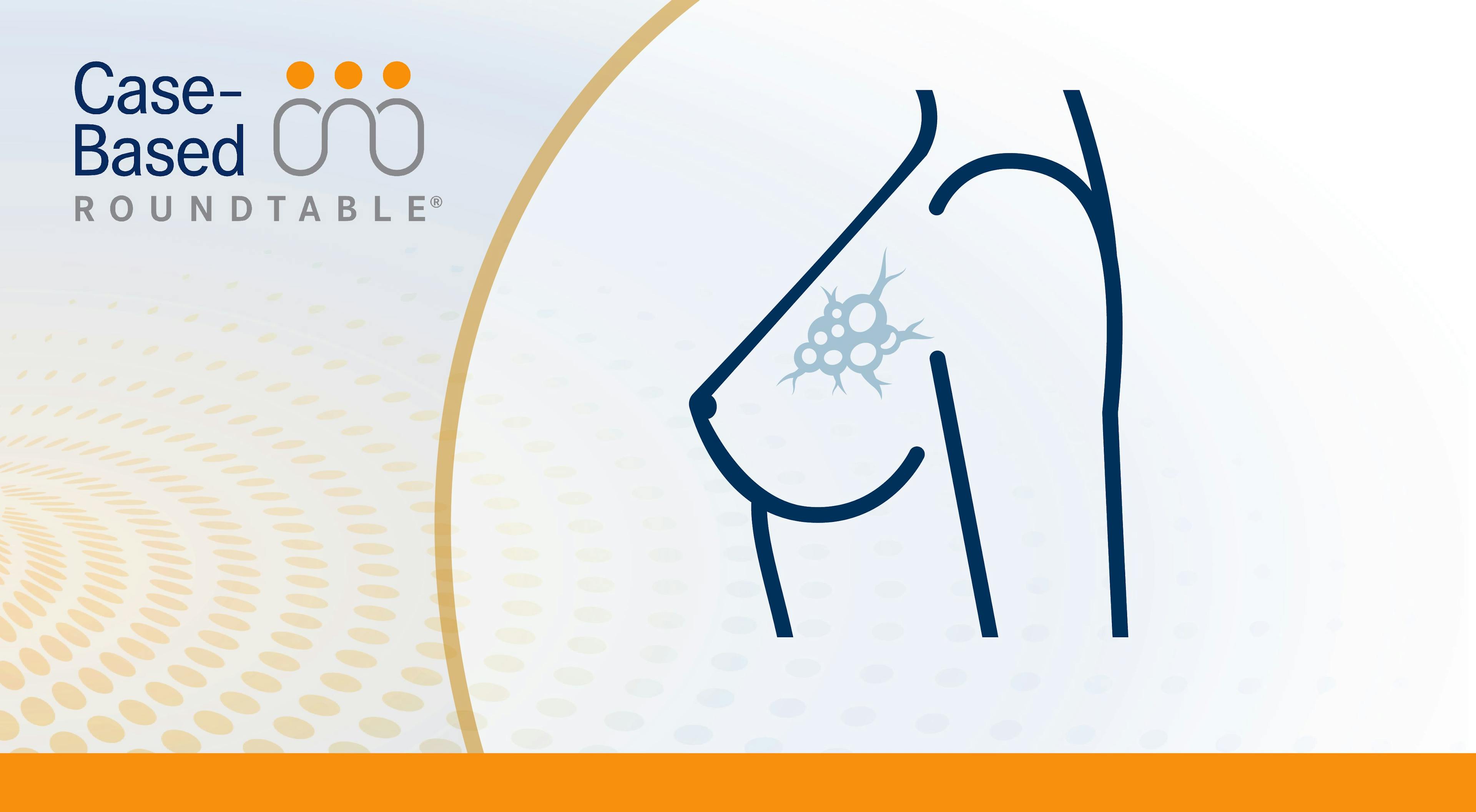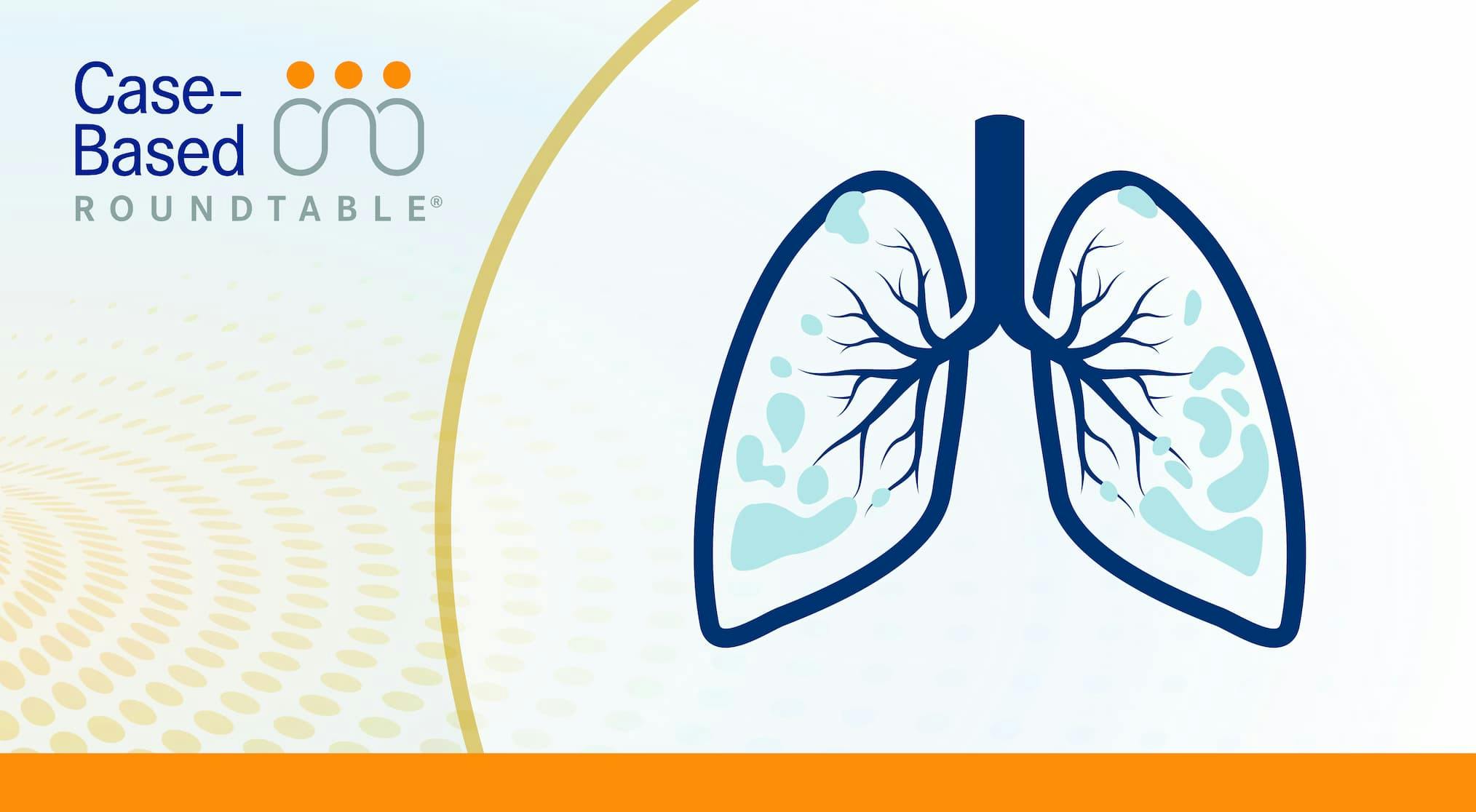Creating Solutions for a 'Continual State of Transition' in Cancer Care
In a Peers & Perspectives in Oncology feature article, we focus on the importance of the transition-of-care process for patients with cancer as they move from the inpatient to outpatient setting, as well as between lines of therapy with comments from Marc J. Braunstein, MD, PhD, and Michael Shusterman, MD.

Caring for a patient with cancer doesn’t end when the patient leaves the hospital or goes home from the community center after receiving treatment and a checkup. Their care is in a continual state of transition, whether that is moving on to new lines of therapy or taking their care services home with them, and it is up to the care team to make sure the patient has what they need as their site of care changes. But resources are not equal across cancer centers, and the hospitals to which their patients are admitted, thus oncology professionals create solutions that work best for them and their patients.
The interventions involved in a patient’s transition of care change from practice to practice and, again, are resource dependent. For instance, at Perlmutter Cancer Center at NYU Langone Hospital–Long Island, patients are part of a larger integrated health system with cancer centers across Brooklyn and Manhattan as well, which allows physicians and nurses to consistently communicate with their patients and receive alerts if the patient is readmitted to one of the system’s hospitals. However, if the patient is readmitted outside their system, the NYU Langone professionals won’t know as quickly and will have to work with different physicians to get this information.
“If they’re on a general medicine hospitalist service, then we will alert our inpatient team or they will [have been] alerted already by the hospitalist, and then we will initiate a process of management in terms of calling the patient to discuss what the reason for admission was and to discuss a coordinated plan while they’re admitted,” said Michael Shusterman, MD, assistant professor of medicine at NYU Grossman Long Island School of Medicine and associate program director of the Hematology and Oncology Fellowship at NYU Langone Hospital–Long Island, in an interview with Peers & Perspectives in Oncology.
As one of the champions for transition-of-care efforts at NYU Langone Hospital–Long Island, Shusterman discussed the importance of using information from their Epic software– based electronic medical records (EMR) system. This allows them to set up routine communications with their patients and share data with the other major cancer sites. Yet when a patient finds themselves outside the NYU Langone system, even if that new hospital utilizes the same EMR system, it does not share patient data immediately with a hospital outside of the system. This makes tracking down the patient’s reason for being admitted, whether it was related to their cancer treatment or not, an ongoing challenge.
“When a patient ends up at a hospital with Epic, we’re essentially following the nodes, but we also can’t really coordinate and manage them. There’s no linked system that links chat, for example, to another hospital. It doesn’t open a special chat system feature that...is an admission chat for their physician who’s also on Epic; there’s really no way to do that. Within the health system it’s incredibly integrated, but outside the health system it’s a fairly substantial challenge that we’ve found, and we just don’t really have a workaround for it, unfortunately,” he explained.
Establishing a Plan
Although guidelines and data help to establish standards of care for disease-specific treatments, guidelines for transition-of-care best practices are not as widely established. However, ones do exist to help create a baseline for oncology practices. For instance, the American Society of Clinical Oncology (ASCO) has a transition checklist with generalized questions regarding, for example, whether the patient has an established relationship with a primary care physician and whether the transition of care has been clearly communicated to the patient so they understand who will be the lead in coordination of care.1
ASCO also notes other resources, such as Cancer Transitions: Moving Beyond Treatment, a 6-week cancer survivorship program from the Livestrong Foundation and Cancer Support Community for patients who have completed their treatment. Individual practices must establish such programs themselves. However, ASCO’s questions highlight the need for thinking about, and laying the groundwork for, a transition-of-care plan as soon as the patient’s treatment begins.
According to Marc J. Braunstein, MD, PhD, an associate professor in the Department of Medicine and course codirector of the hematology-oncology system at NYU Grossman Long Island School of Medicine, and fellowship program director of hematology/oncology at NYU Langone Health–Long Island, the process of establishing transition of care from the hospital to the outpatient setting happens as soon as the patient is admitted. Once they receive the notification for the patient, they make sure to reach out to the family and begin tailoring a plan alongside the necessary treatment.
“The goal, that’s similar for all patients, is that we want to ensure safe transfer of care from the inpatient to the outpatient setting, whether that’s the outpatient setting in our hands or the outpatient setting in another health care facility, like a rehabilitation center,” he said in an interview with Peers & Perspectives in Oncology.
This is a goal shared by all cancer centers regardless of the setting. Importantly, safe and efficient methods of transitional care can result in a lower rate of readmissions to the hospital. For instance, nurse navigators who implemented an evidence-based transitional care model improved their productivity and saw only six 30-day readmissions during the implementation period, according to data published in the Journal of Oncology Navigation & Survivorship.2 Sixty-two patients received transitional care services over a 12-week period during which navigators completed daily chart reviews of inpatients to identify those who were considered high risk.2
The navigators identified such patients based on several factors including comorbidities and social determinants of health, and then assigned them a score based on the Inpatient Readmission Risk Assessment Tool.2 Prior to the start of this project, there were 103 encounters with patients, including 68 coordination-of-care visits and 76 patient education visits. After the 12-week implementation, encounters increased to a total of 142, with 126 coordination-of-care visits and 132 patient education visits.2 With transitional care methods in place, even ones that were not as extensive as those typically implemented by large systems, patient care was ultimately improved, as after implementation of the program the practice was outperforming national benchmarks for patient satisfaction based on responses to questions.2
“There may also be new conditions the patient was diagnosed with,” Braunstein added, when considering how a patient’s situation may change between visits. “This may be a patient who was just diagnosed with a new cancer, like acute leukemia, when they were in the hospital. Or it may be a patient who was already receiving chemotherapy but ended up in the hospital because they were sick, and now we have to modify their treatment plan or get them back on track with their treatment. So the goals are to take the details of what happened during their admission and…get them back on track to where they were before that admission, while considering the things that may have changed while the patient was admitted.”
Looking specifically at patients with acute leukemia, faculty at the Hospital of the University of Pennsylvania in Philadelphia introduced an experienced advanced practice provider (APP) to the role of transitions coordinator.3 This coordinator was given the task of facilitating care coordination as well as providing recommendations to the primary care team. The APP then established interventions for patients by providing counseling sessions, advanced care planning, and routine postdischarge phone calls to make sure the patient understood the instructions they had received for their outpatient care.
According to the hospital’s findings, published in JCO Oncology Practice, the 30-day unplanned readmission rate decreased from 24.6% to 19.1%, and the serious illness conversion rate increased from 11% to 92%.3 Further, the staff’s perception of patient care increased from 2.7% of staff feeling confident about follow-up care to 29.2%, and regarding patient support, from 12% to 41.5%. The study authors concluded that the integration of an APP transitions coordinator is a model that can be repeated across patient populations that require complex care. Improved communications was chief among the lessons learned, they added, as well as understanding that individual patients need individualized transition plans as they head to the outpatient setting.
“We have a coordinated system with our APPs, who will call the patient to follow up with them to ensure that they know their medications, they know their next scheduled visits, and they know what they’re coming in for,” explained Shusterman when discussing NYU Langone’s use of APPs and transitional care models. “We’ll set up a transitional visit, and oncologists are one of the few other specialists who do these transition coding visits just like PCPs [primary care physicians] do, because we do sometimes see our patients very quickly...and we use that discharge call to initiate that process as necessary. It’s a well-oiled machine when it comes to that process and is driven by NYU’s logistics and quality metrics...to ensure an excellent patient experience.”
Communication is Key
Good communication between clinicians, staff, and the patients themselves is the bedrock of transitional care management. A lack of communication is where mistakes happen or delays in treatment occur. Standardization of these patient handoff processes has produced better care and reduced mistakes, such as when Wilmot Cancer Institute at University of Rochester Medical Center, in New York, implemented a series of interventions using the Plan-Do-Study-Act methodology.4
The study authors looked at outcomes from before and after the 1-year period of these interventions, the goal of which was to streamline the treatment handoff process using an EMR-based tool. The authors found that the proportion of medication errors resulting from ineffective handoffs was reduced from 10 of 17 (59%) handoffs preintervention to 11 of 34 (32%) post intervention (P = .07).4 Use of the EMR-based handoff tool helped boost the handoff completion rate from 32% pre-intervention to 86% post intervention, and helped bring about a reduction in patient waiting time with an average of 2 minutes per patient per month. They concluded that allowing multidisciplinary stakeholders to guide the development and implementation of this tool optimized communication between nurses during the patient’s transition.4
According to Shusterman and Braunstein, when a patient is discharged within the NYU Langone system, their home care service follows the patient home. Further, via telemedicine, direct contact is established with that patient. In addition, a home hospital program, a fairly novel program, allows patients to remain at home and receive a wide array of care.
“For example, if [the patient] comes in for diarrhea, and they’re modestly tech savvy, they can use an iPad and our MyChart system. They’ll have basically an entire home hospital system setup, where they can get their hydration, antibiotics, and things like that at home,” explained Shusterman. “So they’re able to smoothly transition from the home hospital into essentially home care services from our clinic. It’s a pretty amazing process; we’ve had multiple patients do that for things that don’t require them to stay in the hospital or the emergency department, and that’s pretty great.”
Training patients, their family, and caregivers in online communication skills has helped to improve transitional care, particularly for older patients.5 According to data published in Aging Clinical and Experimental Research, health care professionals caring for older patients who utilized online transitional care communication skills training significantly improved their communication confidence compared with those who did not utilize the training (P = .0006).5
The researchers randomly assigned 38 health care providers caring for older patients to the experimental training group (n = 18) or the control group (n = 20); 84 pairs of patients and family members were split evenly between the groups. Patients who received the training also had a significant benefit, with fewer rehospitalization counts within their 3-month postdischarge period (P < .05). The researchers also examined whether this training affected the patients’ quality of life and activities of daily living but did not find a significant difference between the groups’ results.5
“I continue to follow my patients longitudinally. If sometimes I lose out [on seeing] them for a follow-up, it is more difficult to then see them 4 or 5 years later because you have to put all the pieces together. I always tell them to come once a year; we can see each other on a telemedicine call, but at least I know what’s going on,” said Cristina Gasparetto, MD, in an interview with Peers & Perspectives in Oncology on transition of care for patients with multiple myeloma between the academic and the community setting, alongside new lines of therapy.
Some oncologists have to communicate the old-fashioned way with their patient’s outpatient care team. Gasparetto, a cellular therapy specialist, hematologic oncologist, hematologist (malignant), and stem cell transplant specialist at Duke Cancer Institute in Durham, North Carolina, makes herself available to referring physicians when a patient from a rural clinic comes to the academic center. She communicates via text and makes sure to let the physicians know they can continue to talk to her. It is important to keep any lines of communication open with patients in rural parts of North Carolina, as coming in to the academic center is not always feasible.
Continuing Therapy
Multiple myeloma is a unique disease for patients who are transitioning between care. One line of therapy could include induction therapy, autologous stem cell transplant, and then maintenance therapy, and many patients either relapse or are refractory to treatment. However, the landscape of treatment for patients with relapsed/refractory multiple myeloma (RRMM) has grown more diverse with an increasing use of novel therapies.6 This has led to an improvement in the time to next therapy from the second line, from a median of 10.4 months (95% CI, 8.4-12.4) to 16.6 months (95% CI, 13.3-20.3; P < .001), according to recent research data.6 The median overall survival from time of first relapse has also increased, from 30.9 months (95% CI, 26.8-183.0) to 65.8 months (95% CI, 50.7-72.8; P < .001).6
According to Gasparetto, every time the patient’s therapy changes, the physician will encounter new toxicities and risks if the treatment is durable, and with some therapies shorter durations of response are seen alongside cumbersome treatments. For Gasparetto, this is why it is important to have continual communication and to choose a convenient and safe therapy for patients in the community when possible. However, multiple myeloma is a complicated disease, and the most convenient choice of therapy may not be the best choice.
“We don’t have a good sequence [of treatment] for patients with multiple myeloma because it is more personalized. I’m not going to choose the same triplet regimen for patient A and patient B, because it is all based on who they are and what type of myeloma they have,” she explained. “What I’m trying to stress with my referral physicians is the communication—let’s talk with each other, I can help you. I don’t want to impose, but I’m here to help and figure out their next therapy. I always tell the patient, ‘You don’t have to come to see me’...but every so often, I can offer my expertise for the transition, continuation, or tweaking of their therapy.”
Additionally, depending on the patient’s treatment, Braunstein noted that some maintenance therapy that is not critical to, or may adversely impact, the patient’s admission to the hospital is usually held during the hospitalization. Most admissions stem from toxicity complications, and ensuring those are dealt with so the patient can continue their long-term therapy is important. Further, Braunstein highlighted the nurse navigators who are essential to continuing care for these patients. They fill critical gaps in care transitions as they have the same medication expertise as oncology nurses and are focused on an individual disease, but are solely focused on helping the patient navigate their cancer care. They do this by making sure the patient has all the information they need, and they can also guide them in practical matters if the patient doesn’t know where to get a test or needs transportation assistance.
Not every oncology practice can rely on the same amount of expert APPs or even connections for clinical trials. Gasparetto makes sure to act as a bridge to clinical trials as novel therapies become more important in the care of patients of RRMM. But relying on one person can be overwhelming, and a community cancer center will have to deal with patients with all kinds of diseases, making it difficult if the center cannot afford expert APPs. Still, even the large practices run into challenges as patients transition from one setting to the other, and the process to improve any center’s transitional care methods is always ongoing.
“Really it’s just so resource dependent, so dependent on the system that you’re working in [and on] what your limitations are. And we share the same complexities and limitations that other places do, because we can only make what works for us work in our system,” concluded Shusterman. “We can’t extrapolate it to another system. We have our own challenges, obviously, and it’s not like everything always works perfectly. That’s why we have a constant quality improvement process, and we meet every week to talk about our patients who are admitted.”
REFERENCES:
1. Providing survivorship care in practice. American Society of Clinical Oncology. Accessed March 8, 2024. https://tinyurl.com/3cfeezb9
2. Passwater C. Bridging the gap: achieving excellence in oncology transitional care. J Oncol Navig Surviv. 2021;12(11). Accessed March 8, 2024. https://tinyurl.com/r2496wvs
3. Allen K, Lightheart E, Kucharczuk CR. Bridging the gap: an integrated approach to transitions in care. JCO Oncol Pract. 2023;19(suppl 11):327. doi:10.1200/OP.2023.19.11_suppl.32
4. Pandya C, Clarke T, Scarsella E, et al. Ensuring effective care transition communication: implementation of an electronic medical record–based tool for improved cancer treatment handoffs between clinic and infusion nurses. J Oncol Pract. 2019;15(5):e480-e489. doi:10.1200/JOP.18.00245
5. Fang JT, Chen SY, Yang LY, et al. Improving transitional care through online communication skills training. Aging Clin Exp Res. 2022;34(12):3063-3071. doi:10.1007/s40520-022-02251-4
6. Goldman-Mazur S, Visram A, Rajkumar SV, et al. Second- and third-line treatment strategies in multiple myeloma: a referral-center experience. Blood Cancer J. 2022;12(12):164. doi:10.1038/s41408-022-00757-8

Survivorship Care Promotes Evidence-Based Approaches for Quality of Life and Beyond
March 21st 2025Frank J. Penedo, PhD, explains the challenges of survivorship care for patients with cancer and how he implements programs to support patients’ emotional, physical, and practical needs.
Read More












